
Are you fascinated by the architectural marvels that define America’s 19th century, each telling a story of innovation and cultural expression?
Welcome to Landmarks Architects, where we celebrate the legacy of 19th-century American architecture.
In this article, we will cover:
- The essence of different 19th-century architectural styles in America
- The key features and influential works of each style
- Iconic buildings and architects of the era
Join us as we unravel the architectural heritage of the 19th century, exploring how these buildings continue to shape our understanding of American history and identity.
Key Architectural Styles and Their Characteristics
1. Federal

Federal-style architecture, which emerged in the United States following the American Revolution between approximately 1780 and 1830, particularly from 1785 to 1815, represents a classical architectural form influenced heavily by the works of Andrea Palladio and the innovations of Thomas Jefferson and his contemporaries.
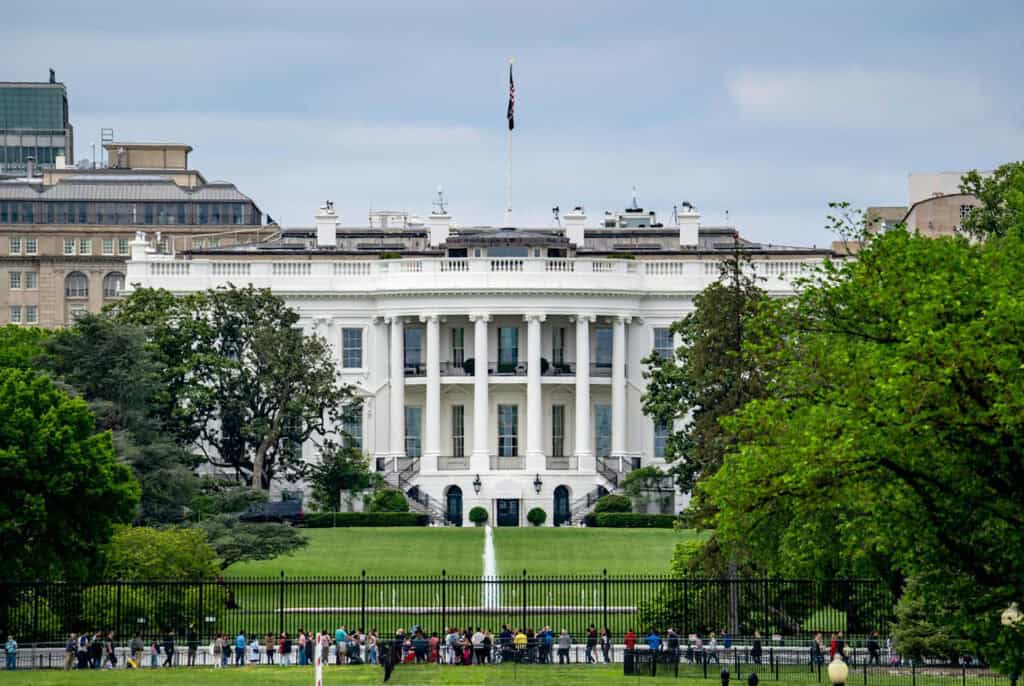
Key Features:
- Plain surfaces with attenuated details, often isolated in panels, tablets, and friezes.
- Smoother, flatter façade that rarely used pilasters.
- Use of fanlight and sidelights surrounding the main entry, and double-hung sash windows with small panes of glass, often in a 6-over-6 pane pattern.
Prominent architects of this style include Charles Bulfinch and Minard Lafever, with Robert Adam and James Adam providing significant influence through their published designs.

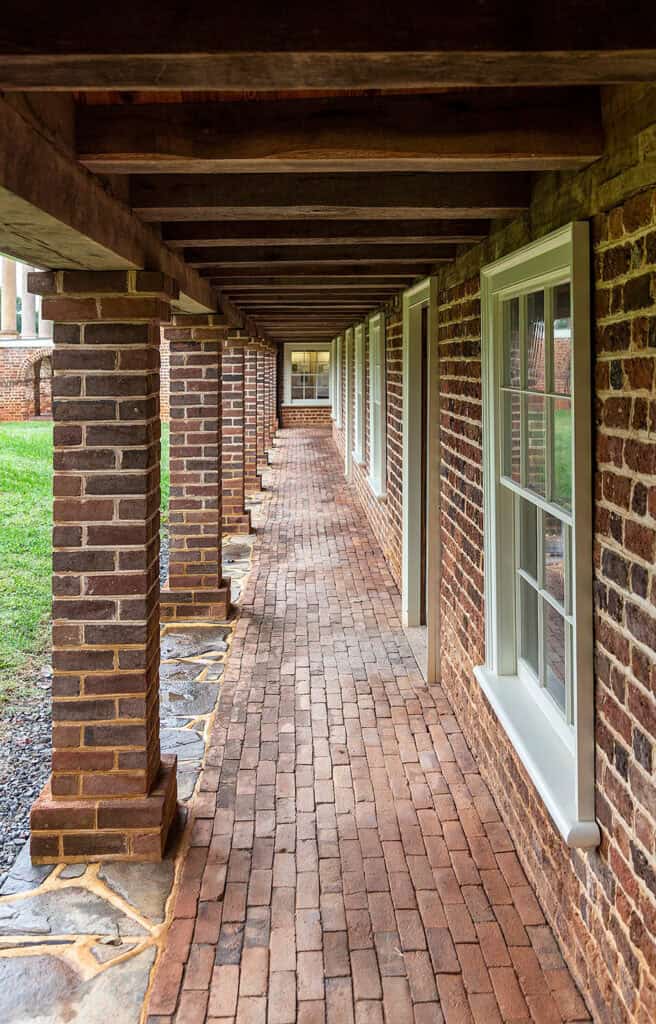
Outstanding Works:
- Thomas Jefferson’s Monticello estate
- The White House
- Jefferson’s Country Retreat Poplar Forest
- Row houses on Bleecker Street in New York
2. Greek Revival Style
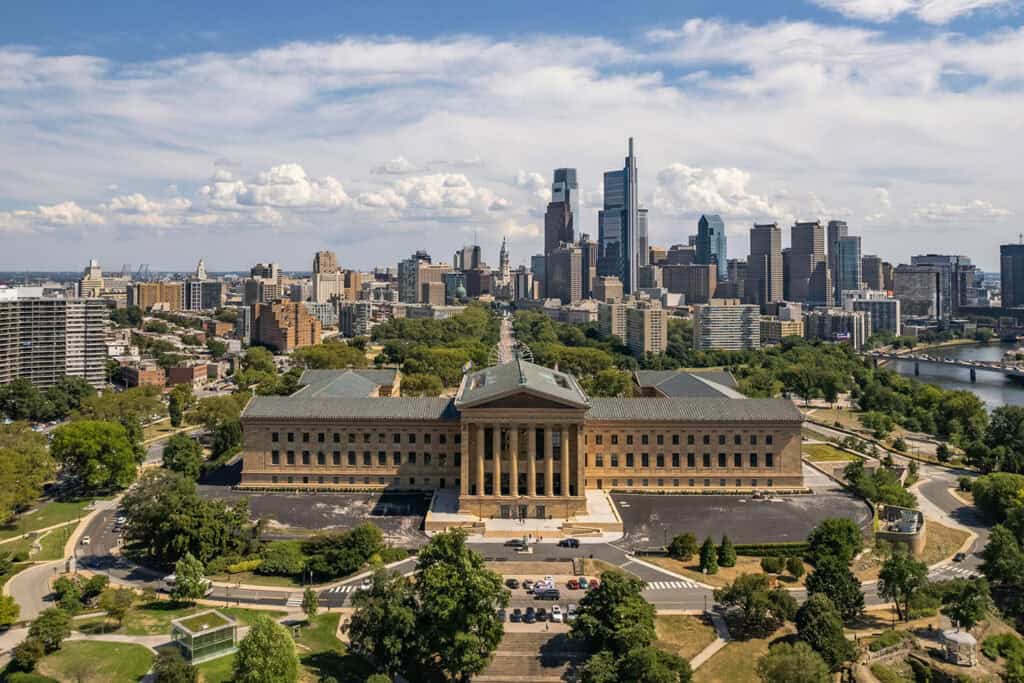
The early 19th century in America saw a surge of enthusiasm for Greek-inspired architecture, driven by a desire to establish a distinct identity from Great Britain following the War of 1812. This trend, known as Greek mania, was further fueled by archaeological findings in Greece. Ancient Greece, celebrated as the cradle of democracy, was deemed an ideal architectural model for the burgeoning United States, leading to the style being referred to as the National style.
Key Features:
- Greek Revival architecture influenced a variety of buildings including homes, courthouses, banks, and outhouses, all with temple fronts and columns.
- Homes typically featured a pediment and wide entablature.
- Early Greek Revival structures favored the Greek Doric order with thick, fluted columns and detailed entablature rules.
- Unlike ancient columns, many in America had distinct bases, though some adhered to the traditional style where columns rose directly from the floor (stylobate).
Charles Bulfinch, celebrated for the Massachusetts State House, and Minard Lafever, renowned for his influential Greek Revival designs.
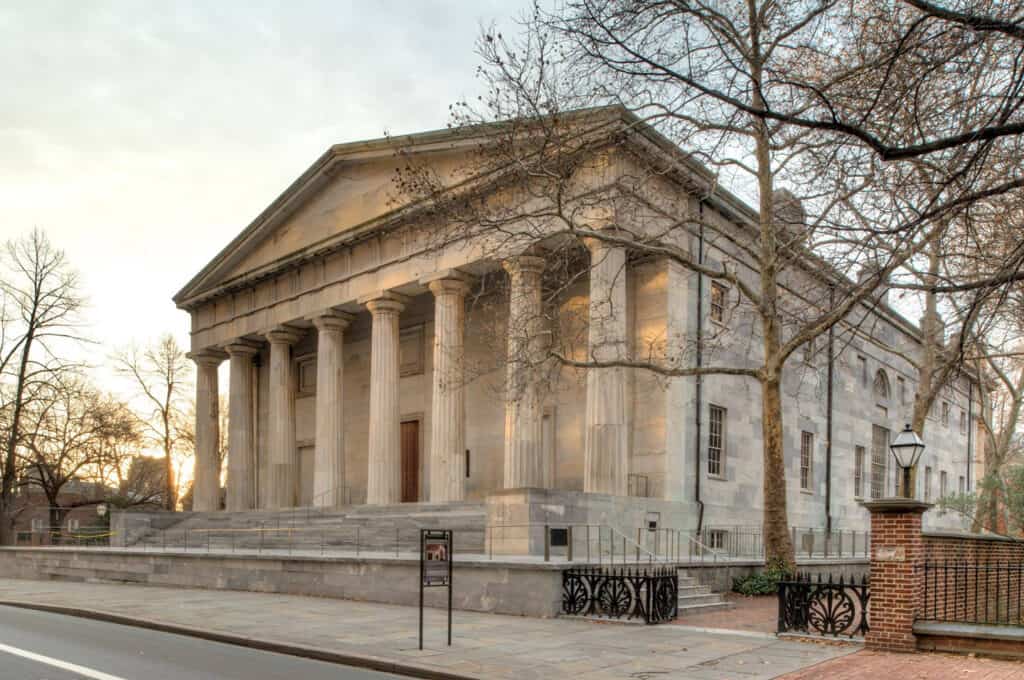
Outstanding Works:
- Philadelphia Museum of Art
- The Benjamin F. Clough House in Waltham, Massachusetts
- Second Bank of the United States
3. Gothic Revival Style
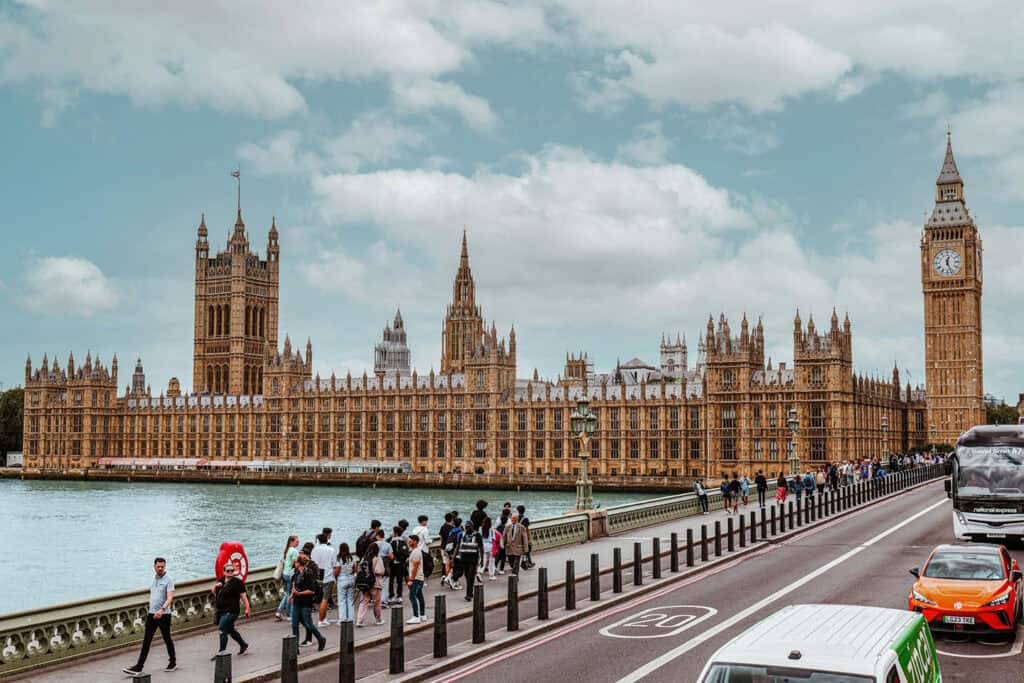
The Gothic Revival movement in the United States, introduced in the 1830s, drew inspiration from medieval cathedrals in France and England dating from the eleventh to fourteenth centuries. Initially confined to church architecture, it later gained popularity for private residences.
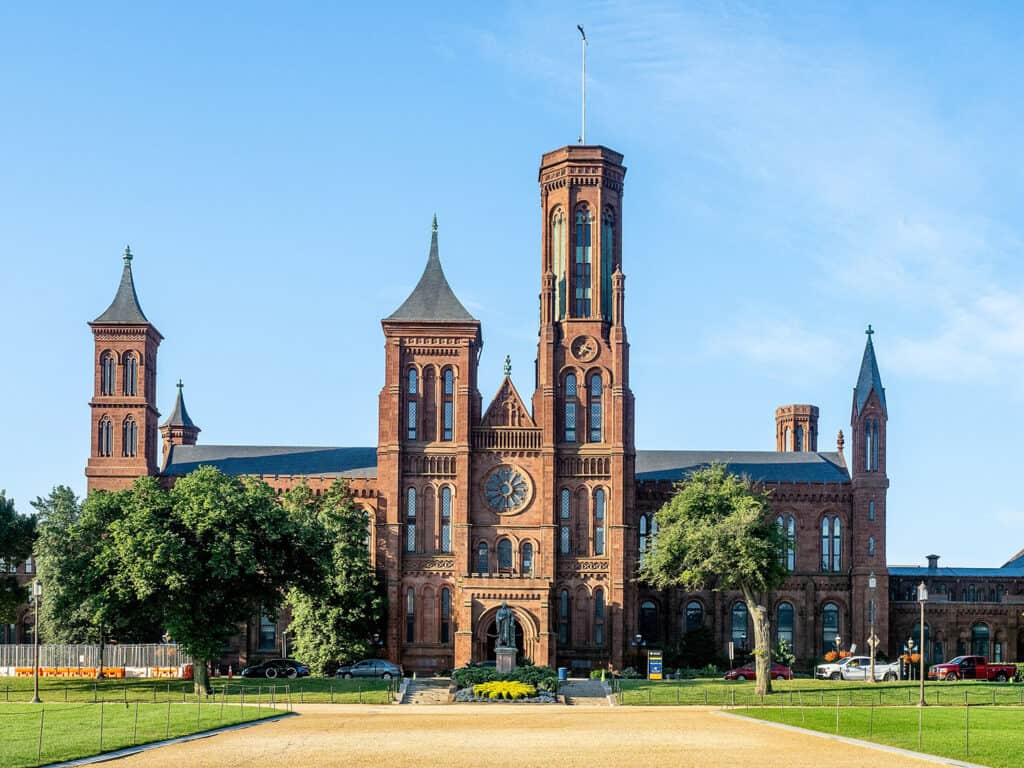
Key Features:
- Gothic Revival buildings feature asymmetry, Gothic windows, and intricate wood trim known as bargeboard.
- They are characterized by elaborate gables, towers, and three-dimensional ornamentation.
- Despite modern alterations, remnants of pointed arch windows and detailed gable decorations endure in places like Oak Park
Architects like Alexander Jackson Davis and Andrew Jackson Downing popularized the Gothic Revival through publications showcasing designs for country cottages.
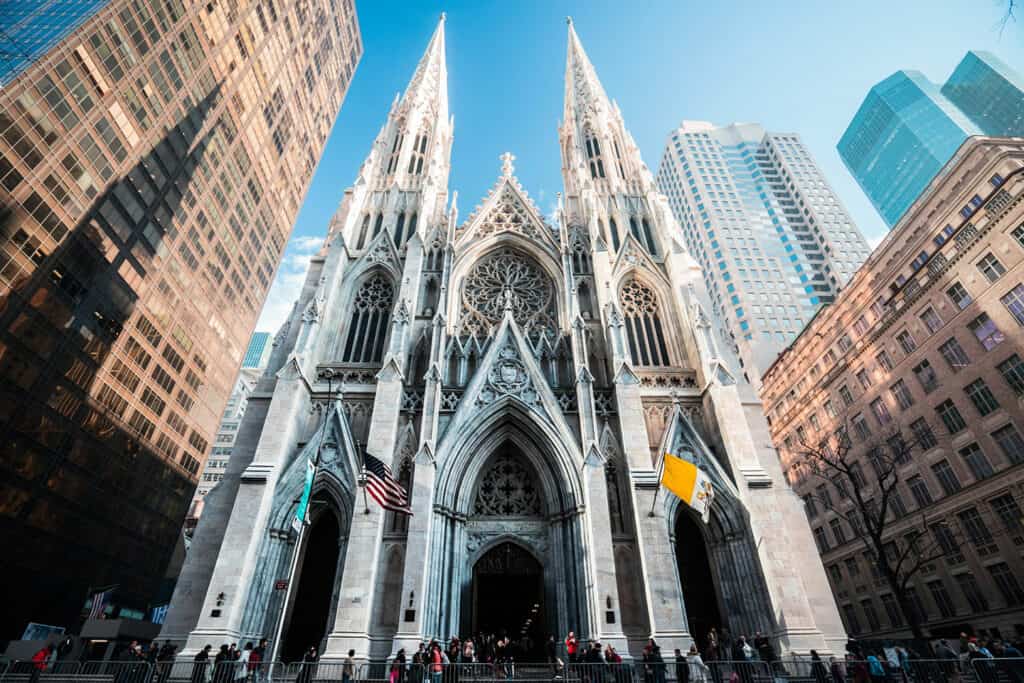
Outstanding Works:
- The Palace of Westminster (Houses of Parliament) in London
- Smithsonian Institution Building
- St. Patrick’s Cathedral
4. Italianate Style
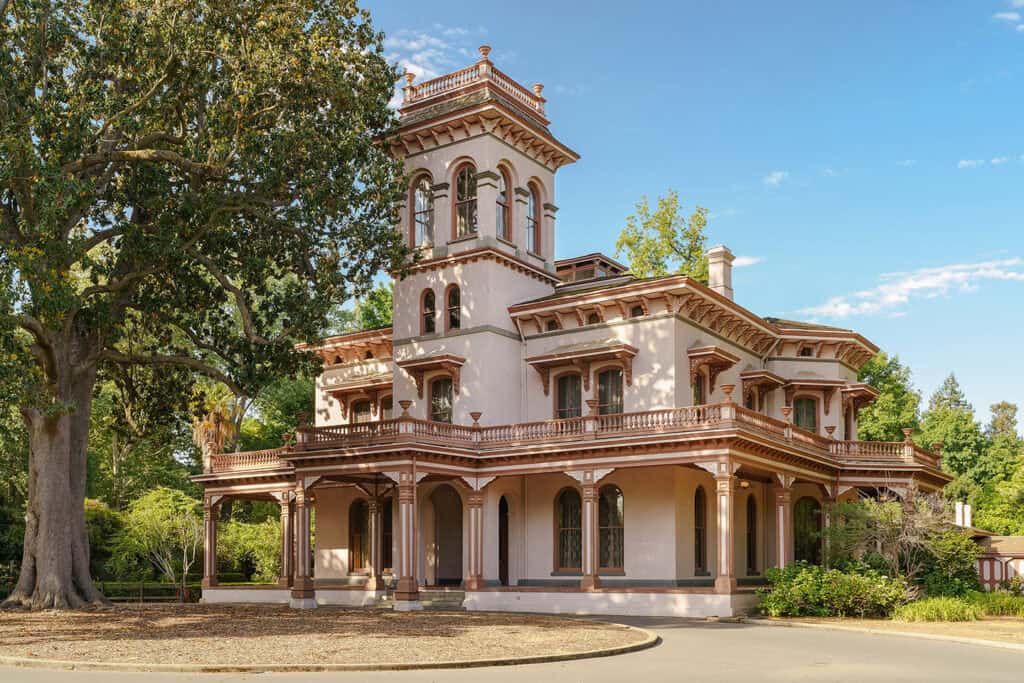
The Italianate style of architecture, derived from farmhouses and villas in northern Italy, became popular in the United States during the 19th century. This style reflects Americans’ enduring admiration for early European architecture.
Italianate architecture became popular in Indiana from 1850 to 1890, spurred by population growth, new railroads, better roads, and expanding farms.
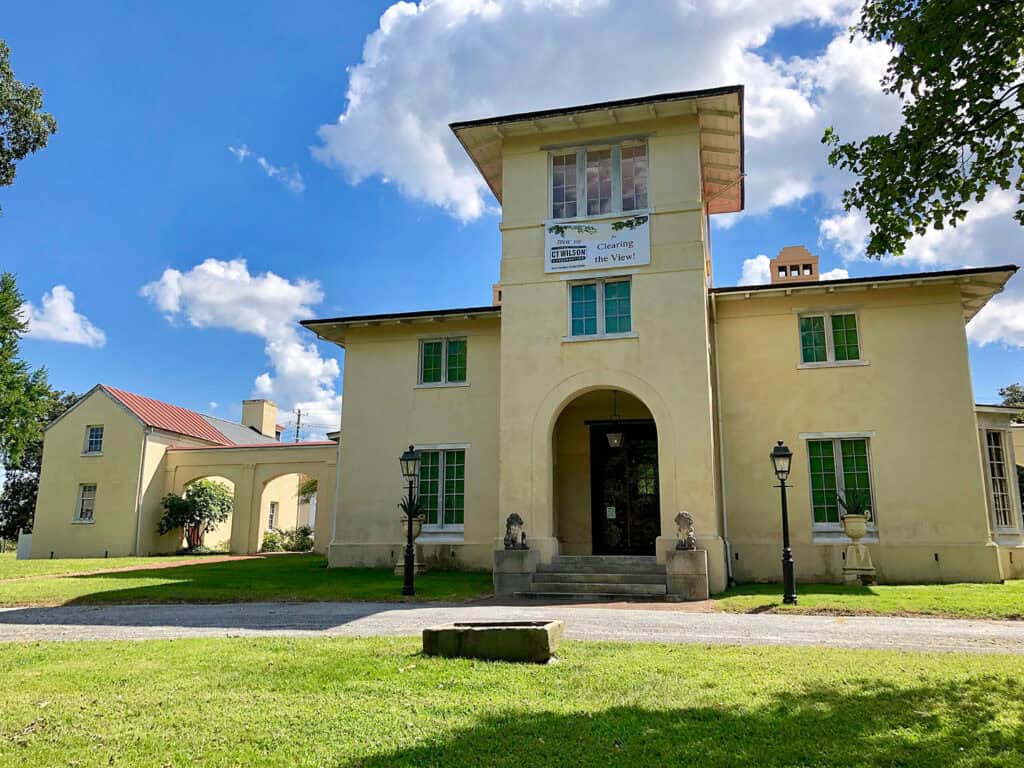
Key Features:
- Brackets supporting overhanging eaves on shallow hip or steep gable roofs.
- Towers or belvederes are often added for dramatic effect.
- Common use of balconies, bay windows, and verandas.
- Rounded windows or windows with a cornice at the head.
Prominent architects of the Italianate era in the United States included Alexander Jackson Davis, Richard Upjohn, John Notman, and Henry Austin, whose designs significantly influenced its spread and popularity.
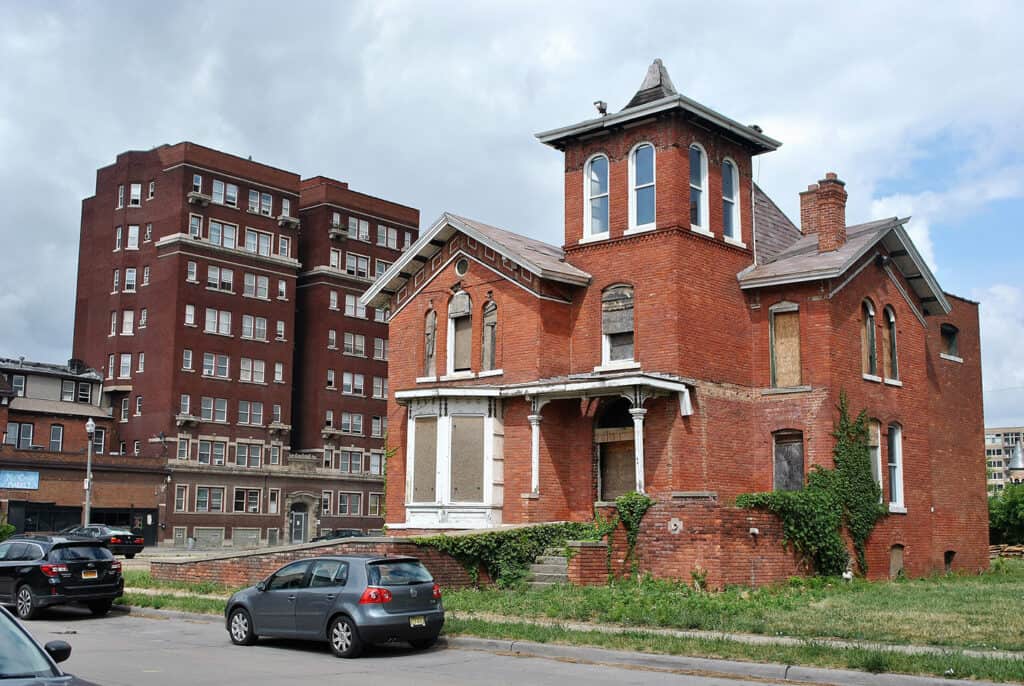
Outstanding Works:
- Bidwell Mansion
- Blandwood Mansion and Gardens
- Horace S. Tarbell House
5. Second Empire Style
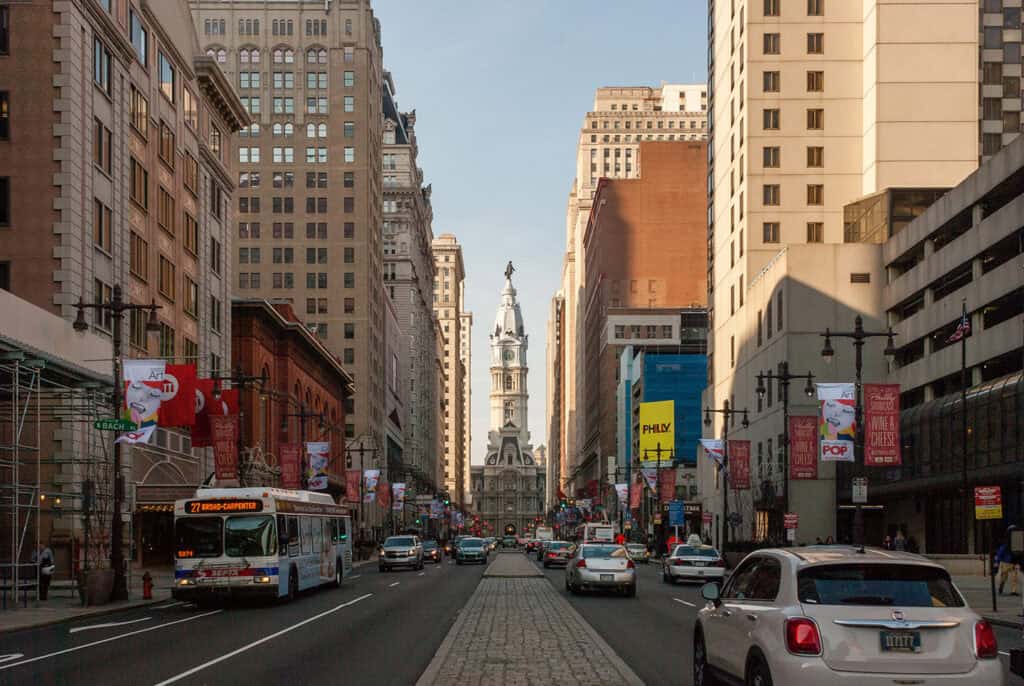
The Second Empire style considered the high style of Victorian architecture, originated from Baron Haussmann‘s redevelopment of Paris during Napoleon III’s reign from 1852-1870. This period, known as the Second Empire, sparked U.S. interest in the latest Parisian fashion.
Key Features:
- The Mansard roof, named after François Mansart, adds an attic floor while avoiding city taxes.
- Features include prominent cornices, symmetrical brackets, classical decorations, arched windows, and towers.
- The Second Empire style has a dual-pitched Mansard roof with dormer windows, allowing light into the attic, used as a third floor.
Prominent architects of the Second Empire era were influenced by Baron Haussmann and François Mansart, whose designs during Napoleon III’s reign helped popularize the style.
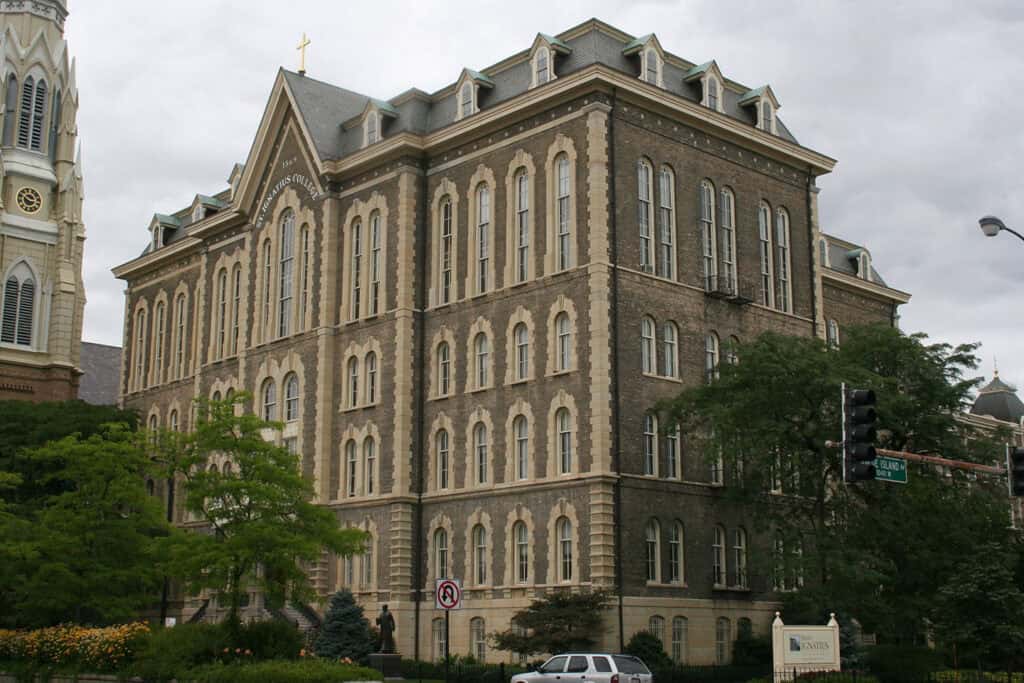
Outstanding Works:
- Philadelphia City Hall
- Saint Ignatius College Prep
- Buildings reflecting Baron Haussmann’s Paris redevelopment
6. Romanesque Revival
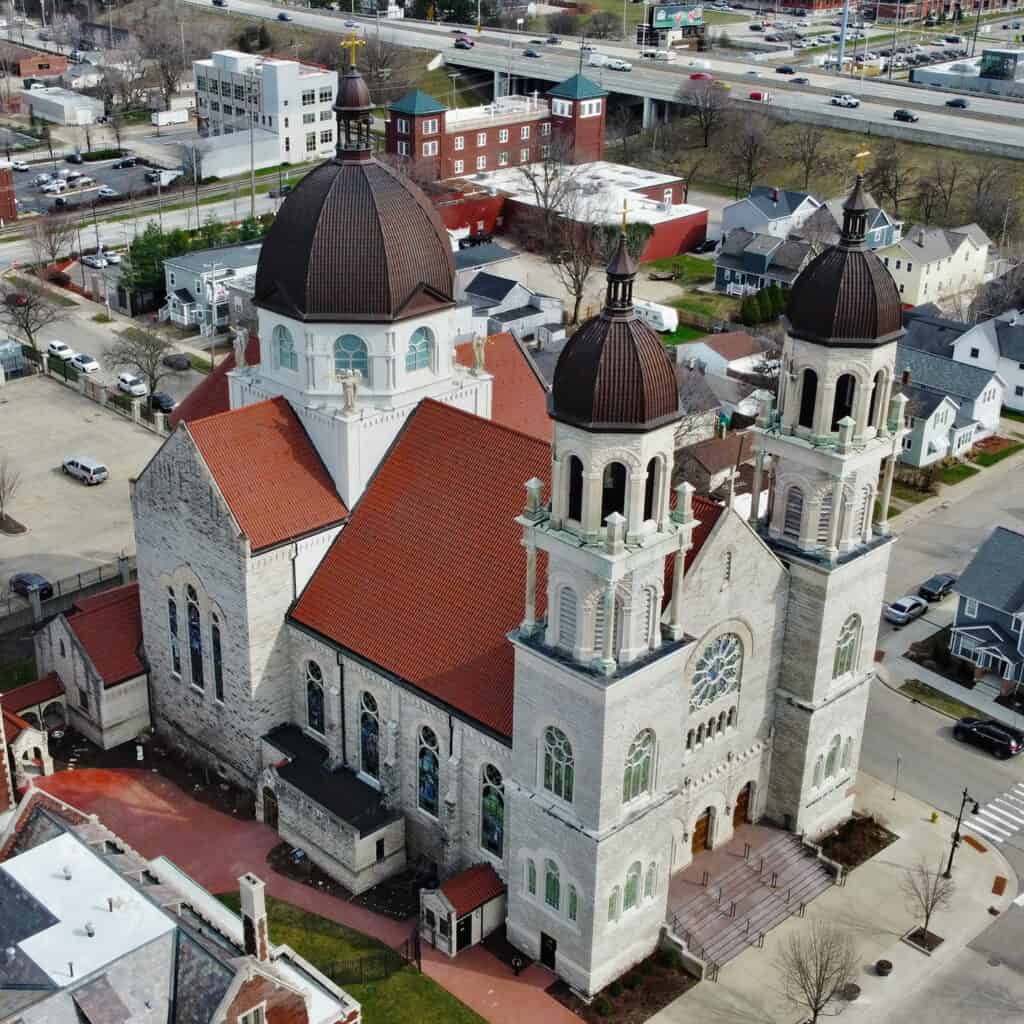
The Romanesque Revival style drew inspiration from eleventh- and twelfth-century European architecture, which in turn was a reboot of ancient Roman forms. The style was popular in Indiana from roughly 1880 to 1900.
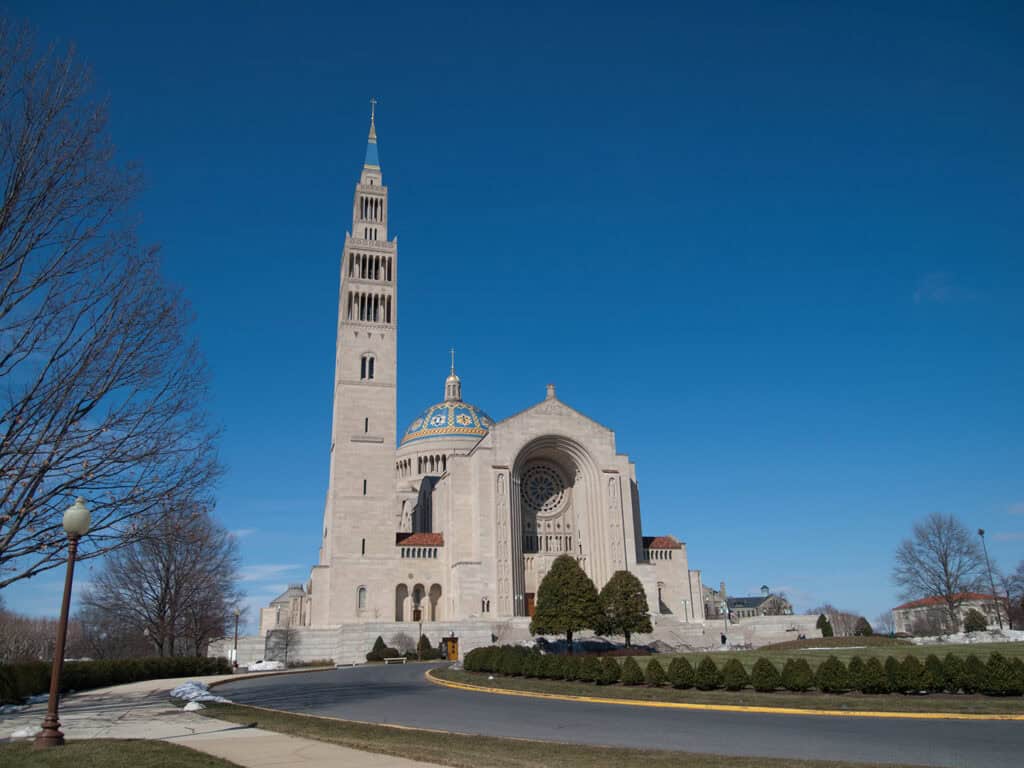
Key Features:
- Massive scale and weighty stone or brick exteriors.
- Heavy round arches, often in stone or brick.
- Hipped roofs with cross-gables and towers.
- Large rough-faced, rusticated stones, deep window openings, steep gabled roofs, and round-arched entrances.
Prominent architect H. H. Richardson is closely associated with the Romanesque Revival style, so much so that the term Richardsonian Romanesque describes his designs.
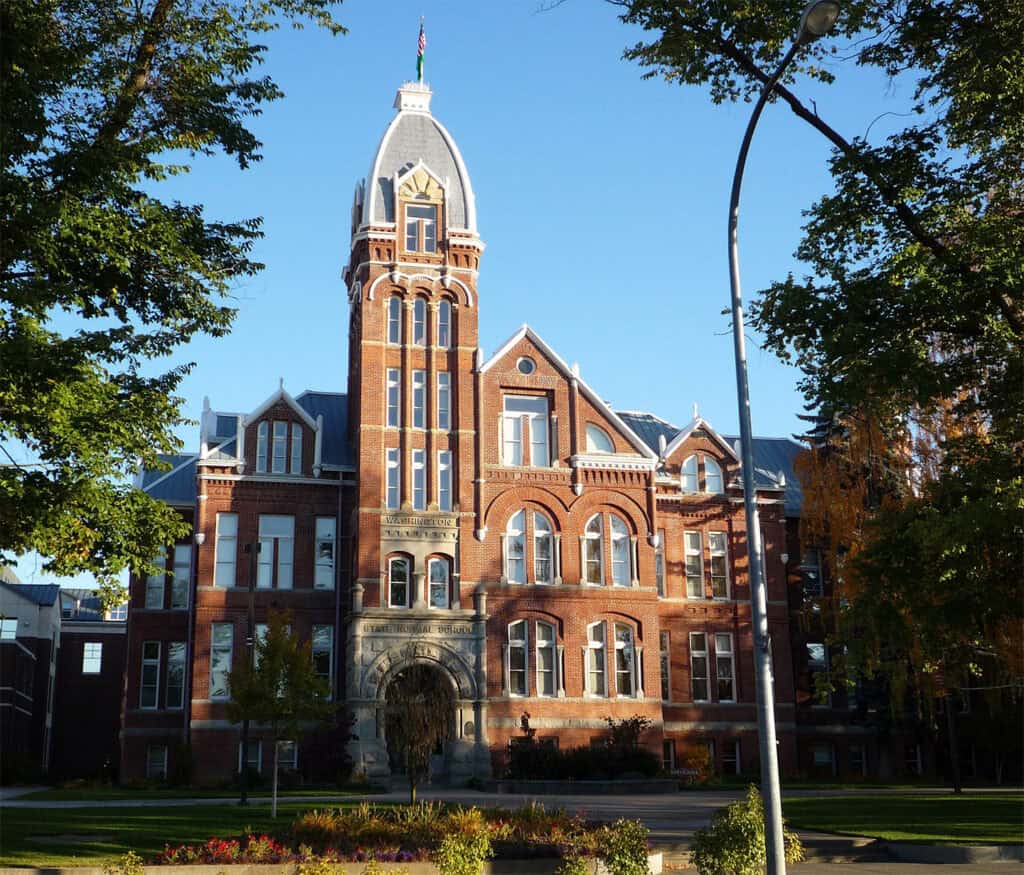
Outstanding Works:
- Basilica of St. Adalbert
- Basilica of the National Shrine of the Immaculate Conception
- CentralWashingtonUniversity
7. Queen Anne Style

In America, Queen Anne architecture, a hallmark of the Gilded Age, originated from two half-timber houses built by Great Britain at the 1876 Philadelphia Centennial Exposition. Inspired by the Elizabethan era, these houses featured entrance halls as central hubs with surrounding rooms of varying size, shape, and function.

Key Features:
- Complex plans and asymmetrical facades.
- Irregular massing with turrets, porches, wings, pinnacles, and prominent chimneys.
- Varied materials: thin clapboard on the first floor, patterned shingle siding on gables.
- Fussy, small-scale ornamentation, sometimes classical, with bay windows featuring plate or leaded glass.
- Elaborate decoration on gable ends conveys a sense of ornate complexity.
The popularity of Queen Anne-style houses grew not through individual architects but through widely circulated house plan books, particularly those published by George F. Barber.
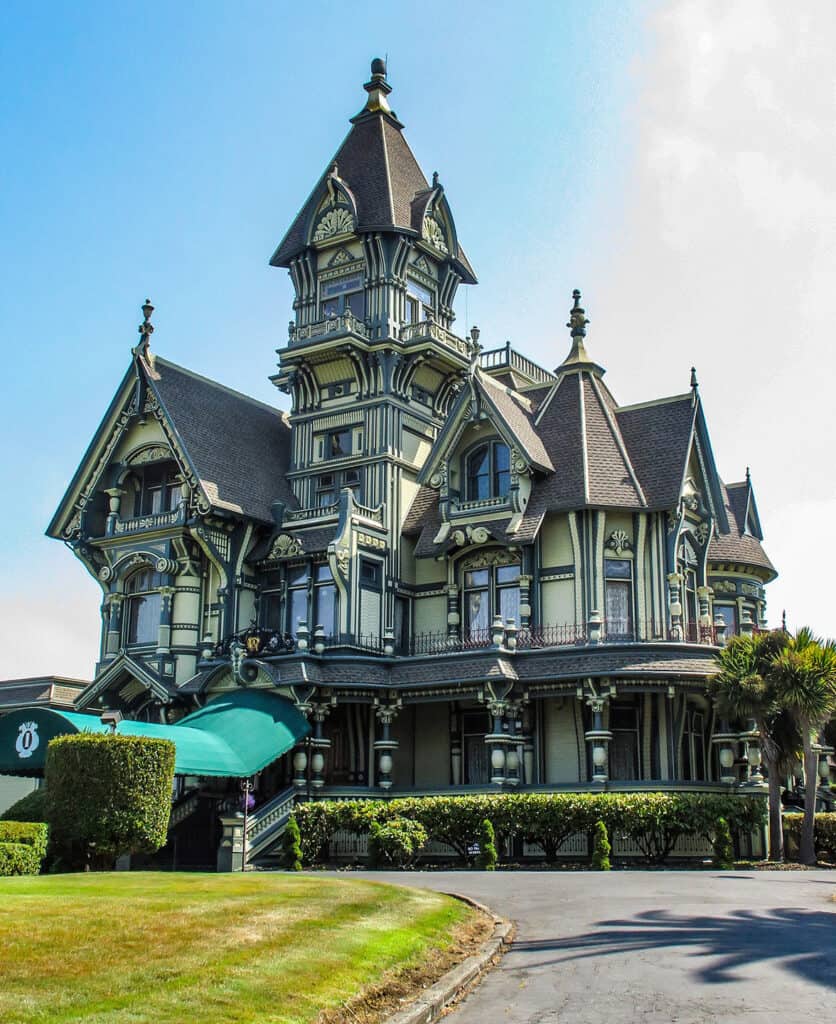
Outstanding Works:
- Colorful Painted Ladies in San Francisco highlights architectural details.
- Victorian-era homes across the US feature diverse styles.
- Free Classic style homes blend classical elements with Queen Anne asymmetry and porches.
19th Century Architecture in America:




In the 19th century, American architecture saw a shift towards revival styles, drawing inspiration from earlier styles such as Gothic, Greek, and Empire.
The legacy of 19th-century American architecture can be seen in the many historic buildings and landmarks that have been preserved through historic preservation efforts. The Metropolitan Museum of Art and Oak Park are just a few examples of the significance of this era in American architecture.










